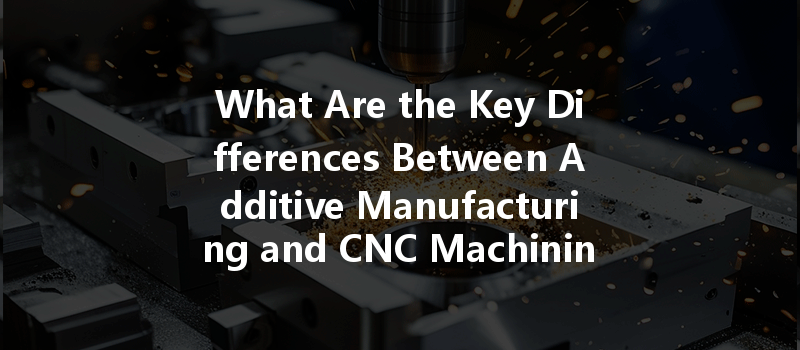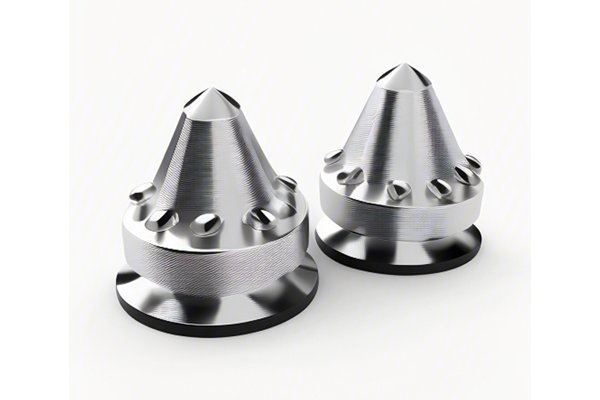Did you know that the global additive manufacturing (AM) market is projected to grow from $11 billion in 2021 to over $40 billion by 2026? This staggering statistic highlights the rising adoption of additive manufacturing technologies, alongside traditional methods like CNC machining. As engineers, manufacturers, and businesses navigate the evolving landscape of production techniques, understanding the fundamental differences between these two processes becomes crucial for decision-making.
Additive manufacturing (AM) and computer numerical control (CNC) machining are two of the most widely used manufacturing processes in modern industry. While both methods have their unique advantages and applications, they operate differently and utilize distinct materials. This blog will delve into the key differences between additive manufacturing and CNC machining, focusing on the materials used, their properties, applications, and the implications of these differences on design and production.
Section 1: Defining Additive Manufacturing and CNC Machining
Before diving into the material differences, it’s important to clarify what each manufacturing process entails.
Additive Manufacturing (AM)
Additive manufacturing is a process that builds objects layer by layer, adding material to create three-dimensional (3D) objects. This can include various technologies such as 3D printing, fused deposition modeling (FDM), stereolithography (SLA), and selective laser sintering (SLS). AM is particularly popular for creating complex geometries and customized products.
CNC Machining
Computer Numerical Control machining, on the other hand, is a subtractive manufacturing technique. It involves removing material from a solid block (workpiece) to create the desired shape and size. CNC machines operate using programmed commands that dictate the movement of cutting tools, ensuring high precision and repeatability. Common CNC machining processes include milling, turning, grinding, and electrical discharge machining (EDM).
Section 2: Material Differences
2.1 Material Types
One of the most significant differences lies in the materials used in each process:
2.2 Material Behavior
The way materials behave during fabrication varies between additive and subtractive methods:
Section 3: Advantages of Each Process

3.1 Advantages of Additive Manufacturing
3.2 Advantages of CNC Machining
Section 4: Applications of Each Process
Now that we have explored the differences and advantages, it’s important to understand where each method excels in real-world applications.
4.1 Applications of Additive Manufacturing
4.2 Applications of CNC Machining
Section 5: The Future of Manufacturing
As technology advances, the lines between additive and subtractive manufacturing are starting to blur. Hybrid manufacturing techniques that combine the strengths of both processes are emerging. For example, parts can be additively manufactured to create complex geometries and then machined for precision finishing.
Additionally, advancements in software and automation are optimizing the design-to-production workflow, enabling faster iterations and production times. With the adoption of Industry 4.0 practices such as IoT-enabled machines, real-time monitoring, and predictive maintenance, manufacturing is evolving towards greater efficiency and customization.
In conclusion, understanding the differences between additive manufacturing and CNC machining materials is vital for manufacturers, engineers, and businesses in making informed decisions about which techniques to employ for specific applications. Each method has unique strengths, weaknesses, and ideal use cases.
While additive manufacturing shines in creating complex, lightweight designs and accommodating customization, CNC machining excels in precision, material versatility, and high-volume production.
As the manufacturing landscape continues to evolve, remaining aware of these differences will empower industry professionals to leverage the most suitable manufacturing processes for their needs. The distinction between additive manufacturing and CNC machining is more than a technical detail; it defines how we innovate, produce, and solve the challenges of tomorrow.
Ultimately, your choice of manufacturing process can have significant implications for production efficiency, product performance, and overall business success. Embrace the knowledge of these manufacturing methods and consider how they can shape the future of your projects and innovations.






